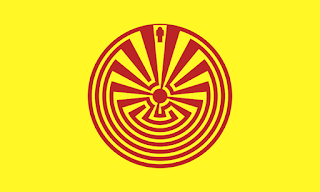The Hopi Amerindians of America tell the tale of the Kachinas who came to visit in the Americas long ago and who taught them their ways of agriculture and how to live peaceably. I believe these Kachinas were the Cronides and included Zeus and Dionysus-Osiris (feathered-serpent). I discuss this connection further in my books. But it is said that some of the Hopi interbred with the Kachinas before they left. Compare the labyrinth of the Hopi (called the man in the maze) to that of the Cretans.
I’itoi, the Man in the Maze
According to the Hopi per Wikipedia:
Iʼitoi or Iʼithi is, in the cosmology of the O’odham peoples, the mischievous creator god who resides in a cave below the peak of Baboquivari Mountain, part of the Tohono O’odham Nation. Visitors to the cave are asked to bring a gift to ensure their safe return from the depths. O’odham oral history describes I’itoi bringing Hohokam people to this earth from the underworld. Hohokam are ancestors of both the Tohono O’odham and theAkimel O’odham (Pima people). He is also responsible for the gift of the Himdag, a series of commandments guiding people to remain in balance with the world and interact with it as intended.The Pima also refer to I’itoi as Se:he “Elder Brother”, also See-a-huh.[1] The term Iʼithi is a dialectal variant used by the Hia C-eḍ O’odham.He is most often referred to as the Man in the Maze, a reference to a design appearing on native basketry and petroglyphs which positions him at the entry to a labyrinth. This labyrinth is believed by the Pima to be a floorplan of his house, and by the Tohono O’odham to be a map giving directions to his house.
So you can see the labyrinth is a clue to Elder brother. This labyrinth was a symbol that goes back to Ariadne who is Isis and the wife of Dionysus-Osiris.
The Hopi have their names for their Kachinas and so do the Navajo and other Puebloan people.
Links:
http://en.wikipedia.org/wiki/I’itoi
http://en.wikipedia.org/wiki/Kachina




